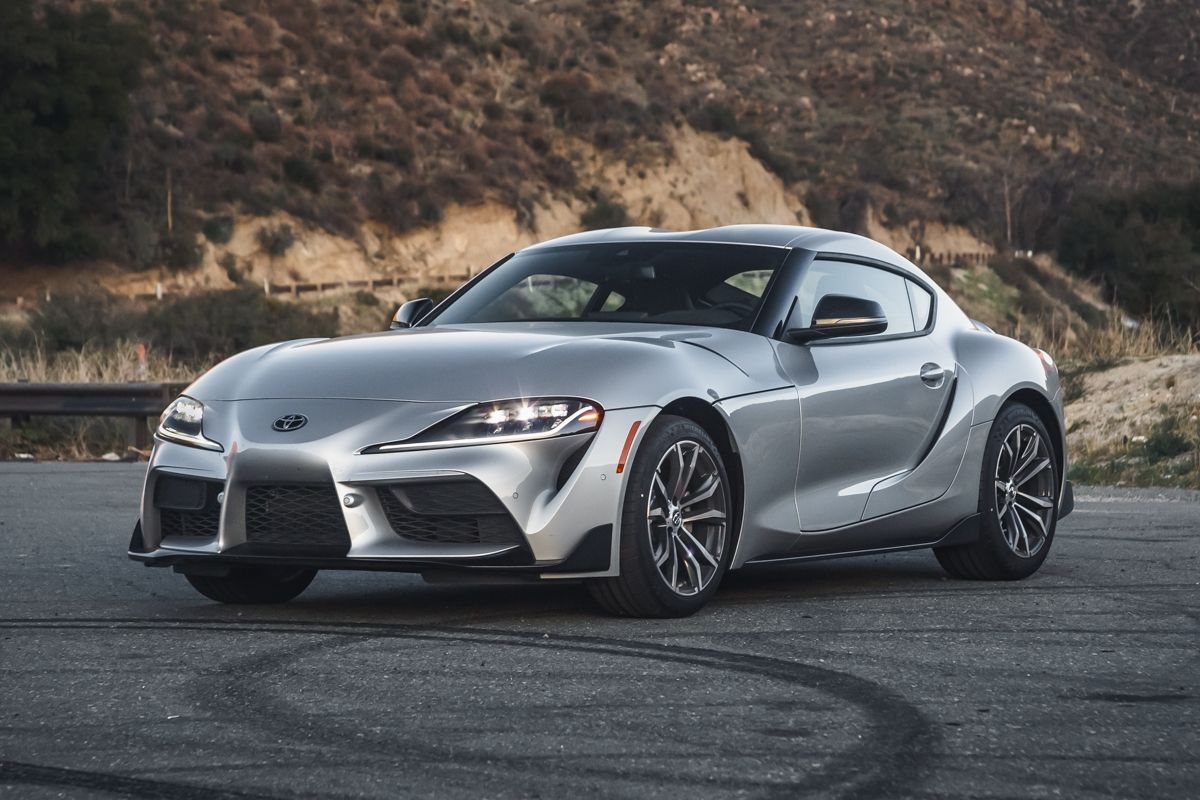The 2021 Toyota GR Supra offers some major changes over last year's model, including the addition of a 2.0-liter turbocharged four-cylinder model called the Supra 2.0. It produces 255 horsepower and 295 lb-ft of torque, landing nicely between the 205-hp Toyota 86 and the 382-hp Supra 3.0. As you'd expect with two fewer cylinders, the Supra 2.0 is lighter than last year's model by around 200 pounds.
CarBuzz had a chance to catch up with the Supra's chief engineer, Tetsuya Tada, at the reveal event during the Daytona 500 in Daytona Beach, Florida. Bob Carter, executive vice president of sales for Toyota Motor North America, was also on hand to answer our questions about the updated Supra following a strong first year on the market.
The first detail we wanted to know was why Toyota chose not to bring back the Celica name for this new four-cylinder Supra. For the 86, Toyota said it didn't want to use the Celica moniker because it wasn't a new product, having already been called the Scion FR-S. The decision was similar here with the Supra.
"Celica is a legendary name but it would have been confusing [to have two names with the same shape]," Carter explained. "The Supra name is iconic in North American and we've wanted to bring it back for many years. I was hoping the reaction would be good but it's far better than expected." Carter even referenced our recent story of the Supra retaining its value after one year.
"We are estimating the first year split will be 80-20 [in favor of the six-cylinder], though it may grow a bit," Carter said. "The four-cylinder is shockingly well balanced and will be substantially more of a value than the six."
Official pricing has yet to be announced but by ditching the power seats, adaptive suspension, and active rear differential, we expect the Supra 2.0 to start in the low-$40,000 price range. Toyota will offer a more luxurious Supra 2.0 with power seats, navigation, and other amenities, and Carter says he expects around 40% of four-cylinder models to be optioned this way.
This means the majority of Supra 2.0 model will likely be the more stripped-down examples, which feels like the logical upgrade from the current 86. Speaking through a translator, Tada-San said, "Looking at the customers who purchased the four-cylinder in Japan, many of them are race car drivers. The six-cylinder was bred for the track but the four-cylinder might be better for downhill winding roads." He explained that many drivers might prefer the agility and usable power of the four-cylinder on the road and depending on the road course, "the four-cylinder might actually be faster."
Tada-San also envisions the Supra 2.0 as a great option for aftermarket tuners. "The engine bay is packed [in the six-cylinder car] and people who want to modify their car will have much more variety in the four-cylinder." So all of those commenters who have been begging for a more powerful, turbocharged 86, here's your chance to speak with your wallet instead of your keyboard.
As for the six-cylinder car, which receives a 47-hp increase for 2021, we asked Tada-San if we can expect a noticeable bump in performance compared to last year's model. "It will be faster [around a track], not just because of the engine but because of the suspension, the braces, retuning the active differential," Tada-San detailed. Toyota wanted to make the 2021 Supra more track-focused, so we can expect it to be slightly less tail-happy than the 2020 car. Though Tada-San was quick to point out the new car will still slide easily "depending on the driver's desire."
Toyota has also replaced the Supra Launch Edition with the new A91 Edition (pictured above and below). This new special edition will be offered in just two colors - Nocturnal and Refraction - the latter of which is a gorgeous new shade of blue. Refraction will only be available on the A91 and just 500 examples will be painted in this hue, so you'd better act quickly if you want one. Just like the Launch Edition, we expect to see markups.

